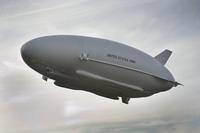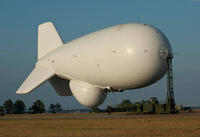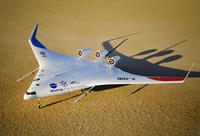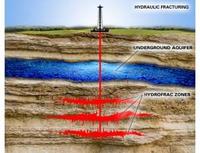-
Siemens software which controls power plants vulnerable to hackers
RuggedCom is a Canadian subsidiary of Siemenswhich sells networking equipment for use in harsh environments with extreme and inclement weather; many critical infrastructure operators of power plants, water systems, dams, and more; a security specialist discovered a flaw in the software, a flaw which allows hackers to spy on communication of infrastructure operators and gain credentials to access computer systems which control power plants as well as other critical systems
-
-
Unmanned civilian drones vulnerable to hijacking
Unmanned drones have become the eyes and ears of the military in recent years, giving them an advantage in intelligence gathering and in operations without risking soldiers’ lives; the drones’ versatility and low price have made them an attractive tool for domestic law enforcement and first response missions; there is one glitch, though: drones can be hijacked; if that happens, these swift, unmanned aircrafts could become weapons for terrorists
-
-
DHS seeks better ways to detect ultra light aircrafts used by smugglers

As the war on drugs continues with every sunrise and sunset, DHS has awarded a contract just short of $100 million for a specialized system which will be able to detect ultralight aircrafts which are used to smuggle drugs across the border
-
-
Smiths Detection Expands Radiation Offering
Partnership with Mirion enables Smiths Detection to offer customers a fuller range of radiation detection technologies
-
-
World’s largest blimp passes flight test

The world’s largest, lighter-than-air, optionally piloted aircraft — the U.S. Army’s Long Endurance Multi-Intelligence Vehicle (LEMV) – completed its first test flight in Lakehurst, New Jersey, the birthplace of the U.S. storied military airship past; the LEMV will provide improved ISR capabilities to the U.S. Army in the form of an “unblinking stare” over ground troops, ranging anywhere from one day to multiple weeks
-
-
First class of U.S. Army soldiers completed training with Raytheon's JLENS

JLENS uses a powerful integrated radar system to detect, track, and target a variety of threats, allowing military units to defend against threats, including hostile cruise missiles, low-flying manned and unmanned aircraft, large caliber rockets, and moving surface vehicles such as boats, SCUD-launchers, automobiles, and tanks
-
-
College buys small UAV for first-responder training program
Sinclair Community College in Dayton, Ohio purchases small unmanned aerial system (SUAS) from UTC Aerospace Systems for use in the college’s training program for first responders
-
-
First ever outdoor flight test of laser powered UAS
Lockheed Martin, LaserMotive, Inc. have completed a series of flight tests of the Stalker Unmanned Aerial System (UAS) to validate the performance of an innovative laser power system
-
-
Researchers move a step closer toward universal flu vaccine and therapies
Researchers describes three human antibodies that provide broad protection against Influenza B virus strains; the same team had previously reported finding broadly neutralizing antibodies against Influenza A strains; the work is a key step toward “universal” vaccine and therapies against flu
-
-
Futuristic blended wing body aircraft passes flight test

Boeing took another step forward in exploring a revolutionary concept — the blended wing body (BWB) — which one day could offer breakthroughs in flight; the X-48B, an unmanned research aircraft which is a scale model of a heavy-lift, subsonic vehicle that forgoes the conventional tube-and-wing airplane design in favor of a triangular aircraft that effectively merges the vehicle’s wing and body, proved during a flight test program that a BWB aircraft can be controlled as effectively as a conventional tube-and-wing aircraft during takeoffs and landings, as well as in other low-speed segments of the flight regime
-
-
New forensic tool automates RAM forensic investigations
New tool enables computer forensic investigators to analyze and make use of information contained in volatile memory; memory analysis produces important, case-relevant data for investigators that cannot be obtained from disk analysis, such as running applications, open files, and active network connections
-
-
DHS develops active shooter national guidance
DHS has selected a training program from the Center for Personal Protection and Safety (CPPS) as resource in developing national guidance for how to respond to an active shooter situation
-
-
Canadian company offers the first treatment to neutralize red mud

Red mud is the most significant waste product of the traditional Bayer process for aluminum production; the industry produces more than 100 million tons of red mud a year, of which less than 5 percent is be reused; the rest is stored in ponds and reservoirs, posing serious environmental and economic risk; on 4 October 2010, for example, a flood of toxic red mud devastated Hungary after a retaining dyke ruptured, causing an ecological disaster; Canadian company Orbite Aluminae offers a technology to tackle the aluminum industry’s most serious problem
-
-
Raytheon's Space Fence technology tracks space debris

Space debris threatens systems the U.S. military and economy depend on every day, including satellites that power navigation, weather and critical infrastructures; the Space Fence program is capable of detecting more and much smaller objects in low earth orbit
-
-
Conflict of interests charges surround two pro-fracking studies

Two recent studies — by research institutes at the University of Buffalo and the University of Texas — on the relationship between fracking and the contamination of groundwater, offered what was claimed to be scientific, peer-reviewed research which concluded that fracking does not contribute to such contamination; an examination of the two reports reveals that they were not properly reviewed according to accepted academic standards, and that their authors, and the research institutes which sponsored them, are heavily involved with companies which conduct fracking operations; the author of the University of Texas report sits on the board of a leading fracking company, where his compensation is more than twice as large as his UT salary; he did not disclose this fact in the study — or inform UT of this connection; UT is investigating
-
- All
- Regional
- Water
- Biometrics
- Borders/Immig
- Business
- Cybersecurity
- Detection
- Disasters
- Government
- Infrastructure
- International
- Public health
- Public Safety
- Communication interoperabillity
- Emergency services
- Emergency medical services
- Fire
- First response
- IEDs
- Law Enforcement
- Law Enforcement Technology
- Military technology
- Nonlethal weapons
- Nuclear weapons
- Personal protection equipment
- Police
- Notification /alert systems
- Situational awareness
- Weapons systems
- Sci-Tech
- Sector Reports
- Surveillance
- Transportation
Advertising & Marketing: advertise@newswirepubs.com
Editorial: editor@newswirepubs.com
General: info@newswirepubs.com
2010-2011 © News Wire Publications, LLC News Wire Publications, LLC
220 Old Country Road | Suite 200 | Mineola | New York | 11501
Permissions and Policies
Editorial: editor@newswirepubs.com
General: info@newswirepubs.com
2010-2011 © News Wire Publications, LLC News Wire Publications, LLC
220 Old Country Road | Suite 200 | Mineola | New York | 11501
Permissions and Policies
